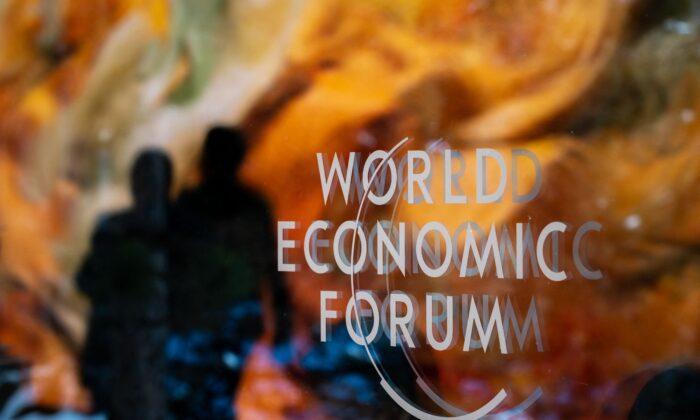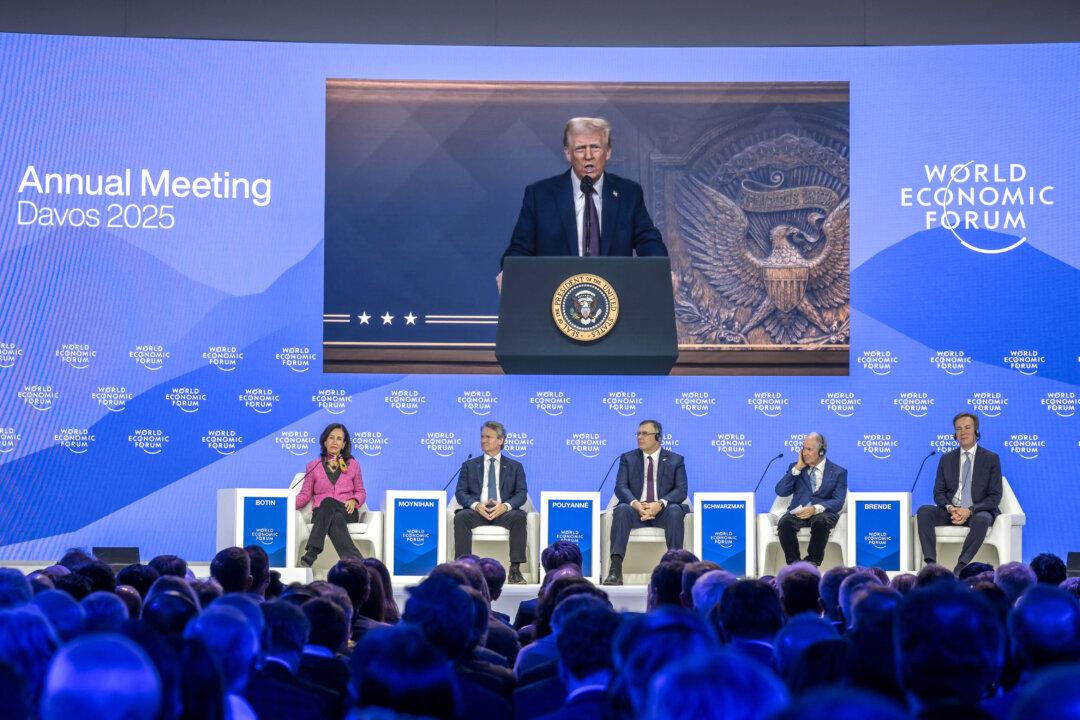The climate and social justice movement is seeking to rebrand itself from a progressive ideology to a prudent tool for risk management. This not only allows it to frame its bleak vision of the future as a safety measure; it also allows its corporate and Wall Street adherents to claim that they’re not pursuing a political agenda at shareholders’ expense but rather managing risk on their behalf.
Underscoring this narrative, former Vice President Al Gore told attendees that the accumulated amount of CO2 emissions in our atmosphere “is now trapping as much extra heat as would be released from 600,000 Hiroshima-class atomic bombs exploding every single day on the earth. That’s what’s boiling the oceans, creating these atmospheric rivers and the rain bombs and sucking the moisture out of the land.”
U.N. Secretary-General Antonio Guterres echoed these remarks, declaring that the production of fossil fuels was “inconsistent with human survival.”
‘Net Zero’
The Global Risks Report states that shortages of energy and food, and the consequent “cost of living crisis,” are primarily the result of the COVID-19 pandemic and the war in Ukraine. The solution, says the WEF, is accelerating the transition from fossil fuels to wind and solar and reaching “net zero” emissions on schedule, which will help resolve shortages, bring down inflation, and stabilize the climate. But some are skeptical.“That is downright laughable,” Joel Griffith, a research fellow at The Heritage Foundation, told The Epoch Times. “We know that the inflation that we see right now is a combination of massive money printing—the central banks have had the printing presses on high speed in order to fund massive government expansions over the past 2 1/2 years—and the COVID impact that they mentioned.”
Regarding COVID-19, however, “these are the world leaders gathered [in Davos] that embraced those shutdowns,” Griffith said. “Thankfully, they did not fully implement net zero; if they would have implemented net zero carbon emissions reductions, the energy crisis would have been even worse.”
Transformation Road Map
Currently, about 84 percent of the world’s energy is generated by oil, gas, and coal. Wind and solar, despite decades of subsidies and regulatory support, still account for less than 5 percent of energy consumed. Despite heavy investments to build wind and solar capacity, their intermittent nature means that they’re useable for generating electricity only about one-third of the time in an average year.“Food and agriculture collectively account for more than 30% of greenhouse gas (GHG) emissions and over 80% of deforestation and biodiversity loss around the world,” the report states. Consequently, “every country needs to develop and implement an integrated food systems transformation roadmap.”
The report identified “five dimensions of food system success,” which included not only the goals of producing food but also equity, biodiversity, climate adaptation, and healthy diets. Arguing that farmers, governments, and corporations must collaborate on this transformation, the report noted that diets must also change.
‘Transition Risk’
Taking the WEF’s climate-risk assessment to heart, the Biden administration has transformed all federal agencies in line with President Joe Biden’s executive order upon assuming office that stated, “It is the policy of my Administration to organize and deploy the full capacity of its agencies to combat the climate crisis.” Biden’s directive declared that “we face a climate crisis that threatens our people and communities, public health and economy, and, starkly, our ability to live on planet Earth.”This has often resulted in federal agencies being directed away from their original purpose toward goals that are often outside their legal mandate, such as the FBI’s new initiative for “climate justice.” One of the more far-reaching measures is a new rule by the U.S. Securities and Exchange Commission (SEC), which was established to protect everyday investors from securities fraud, to fight climate change. The rule requires that all listed companies produce audited reports detailing their CO2 emissions, those of their suppliers, and those of their customers, as well as how they plan to mitigate those risks.
“Transition risk really boils down to the idea that future changes in law or regulation are going to reduce the value of investments,” Jonathan Berry, a partner at Boyden Gray & Associates, told The Epoch Times. “In one sense, transition risk is a trivially obvious concept—of course, you need to think about the possibility of future legal changes when evaluating the wisdom of an investment—but the SEC and the institutional investors’ use of that concept always points to transition risks that the progressive left specifically cares about.
“If transition risks were being used objectively, we would be hearing more about the risk that the United States is going to decouple from China and all of the risks to supply chains that’s going to pose, rather than going to net zero. It’s easier to imagine that we might further distance ourselves from China than that we are going to hasten to actually implement the Paris Accords.”
What Biden called “this incredible transition” to wind, solar, and electric cars will increase our dependence on China, which controls many of the mines where minerals are extracted and has a dominant position in refining those minerals and manufacturing them into batteries, solar panels, and wind turbines. Fossil fuels, by contrast, are plentiful in the United States and can not only supply our energy needs but also supply export markets where other countries are struggling to meet the ever-increasing demand. This could prove an opportunity, rather than a risk.





